What is Signal Flow?
Introduction
In any situation, there is going to be a series of sources and destinations where sound is generated, captured and processed. The order of how sound travels through these destinations is referred to as “Signal Flow”.

You can already identify signal flow in your every day life from how you speak or play instruments. We know the idea that if one person speaks then the other hears. However, let’s identify the stages between the source and destination in more detail.
- The player creates sound using their voice or instrument.
- Air molecules vibrate inside their body or instrument.
- The vibrations flows out into the air.
- The listener hears the air vibrations as sound with their ears.

When analyzing signal flow, we break down every component into it’s simplest form in order to get a better understanding of how a sound is treated at any stage. Understanding signal flow is like having the ability to see the matrix surrounding the environment . You are fully aware to utilize more resources you otherwise would not know to use and be able to identify any problems that need of fixing.

What is Signal Flow?
Signal Flow is the path which audio can take between its source and its destination. It follows the order of the connections made in an environment. Signal Flow is not necessarily “fixed” and can be changed using various functions on the mixer or with signal routing (using a patchbay or digital router).

Think of dominoes as they fall. They could be made to split but, can ultimately re-join again later on. The more signals and routing that occur, the more complex the signal flow. That might seem intimidating at first. However, when properly understood that it’s provides the confidence to investigate and offers wider flexibility working with sound.

“Signal flow is the universal language behind the path of audio in any recording and production scenario. Understanding and applying signal flow is one of your best tools to increase productivity and avoid stumbling blocks. The more you know the more creative you can be.”
VideoMaker.com
Example: Ultra Compact Mixer Signal Flow Diagram
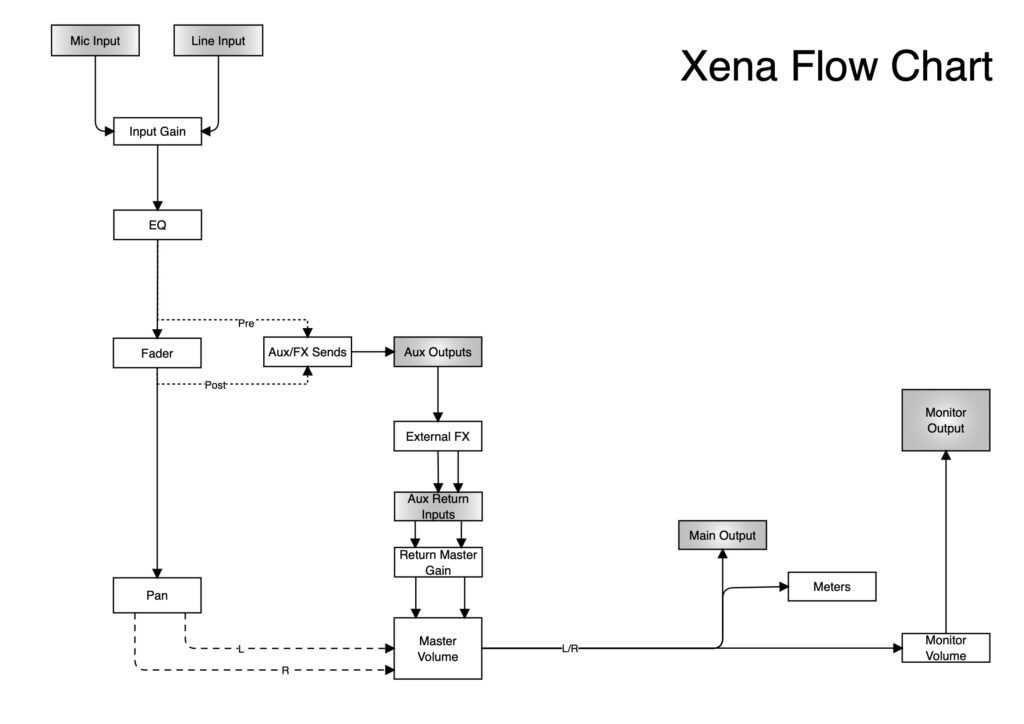
What to Consider?
Connections
How are all of the devices wired together? What connection is an input or an output? When first building a setup, it’s important to identify which connectors are compatible. The various input and outputs connectors can differ device to device. Read the labels!
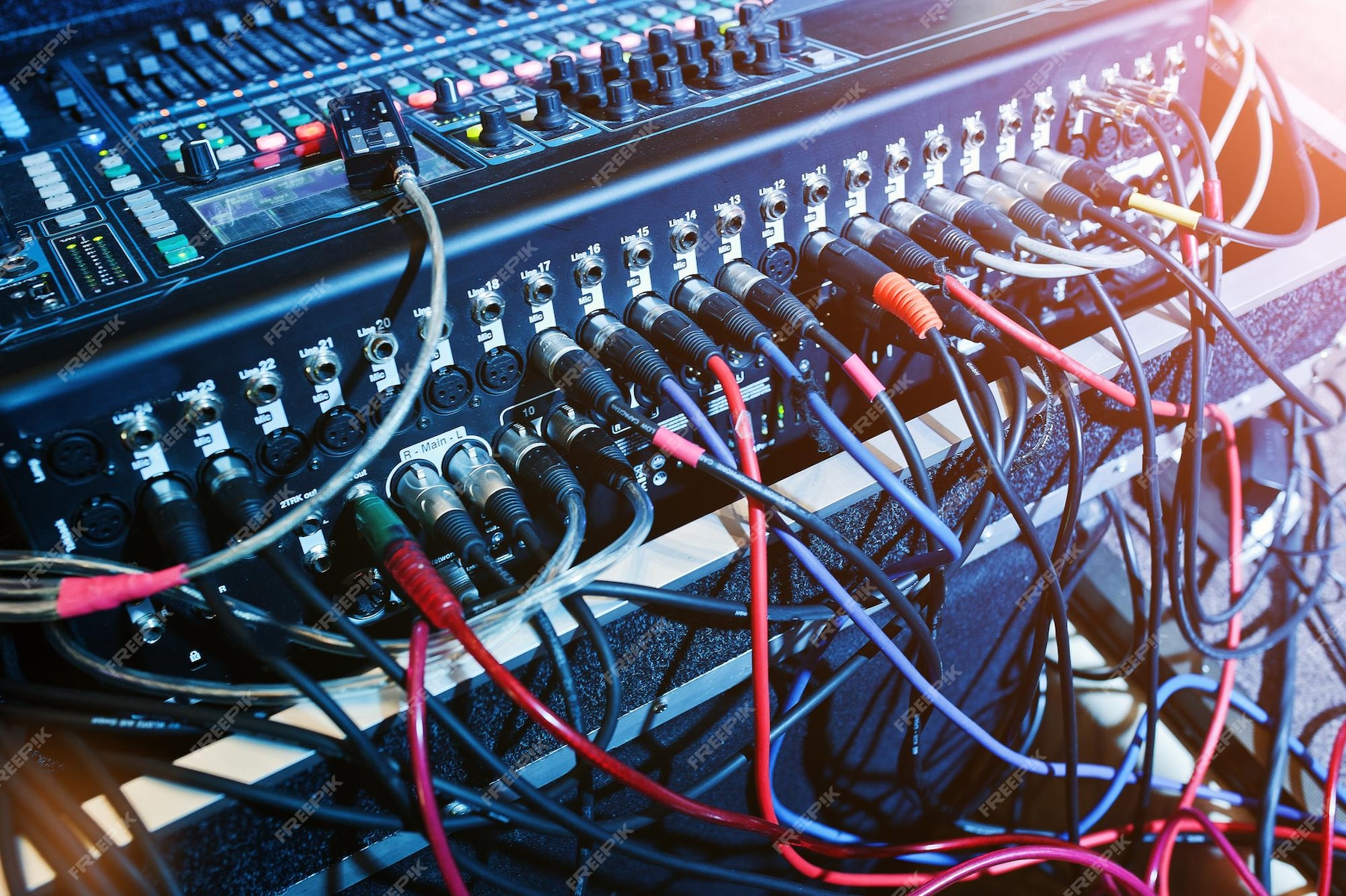

Gain Staging
Volume adjustments are a common process to raise or lower audio to a desired level. The various points of adjusting volume found throughout the signal flow chain are referred to as “gain stages”. Poor gain stage management could introduce unwanted artifacts such as clipping or noise.

If a healthy signal level (A) is reduced at any point whether it’s by fader or audio effect (B), if you try to boost that signal later down the signal chain (C) it could introduced noise. You would want to make adjustments to the process that is reducing the signal rather than try to fix it later in the signal path.
Routing
Hardwired connections are not the only way to change connections or the order of signal flow. Every session will likely require different needs for setup. We want to avoid re-wiring connections on the back of devices in order to prevent wear and tear on connection ports and also to streamline any routine workflow. It’s easier to replace a cable than repair a broken port on a hardware device.
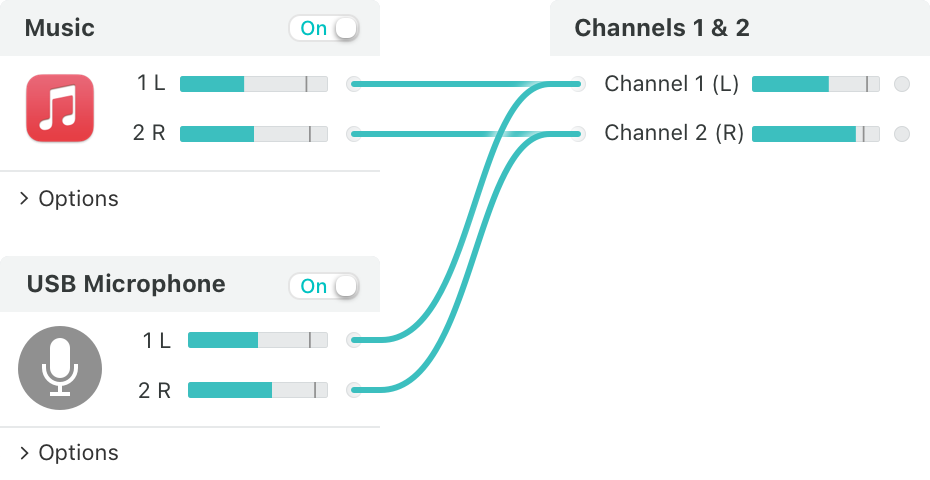
The flexibility to send and receive audio from any destination in the environment is provided by a routing mechanism. The signal flow can be easily changed using a patchbay or digital router (software controlled). This is extremely helpful when wanting to a source (like a microphone) to be sent directly to the speakers without rewiring any physical connections.
“Getting it Right” at the Source
Of all the lessons you will learn, this will always be the most true; the need to capture sound correctly from the start with clear and healthy levels. This is essential when working with microphones. If mismanaged, it could lead to unwanted artifacts introduced to the signal, such as noise. Consequently, everything following down the signal path will also contain these poor characteristics.

Getting it right involves proper placement of microphones, minimizing unwanted acoustic reflections and retaining healthy signal levels at all points of the signal chain. Even the quality of cables and connections play a significant role in the outcome. If a cable is introducing noise to a signal, it will be also heard anywhere that signal goes.
Difference between Mic vs Line Signals
Speaking of sources, it is very important to distinguish two key types of audio signals; Mic and Line level signals. The difference is the electronic levels of the signal.
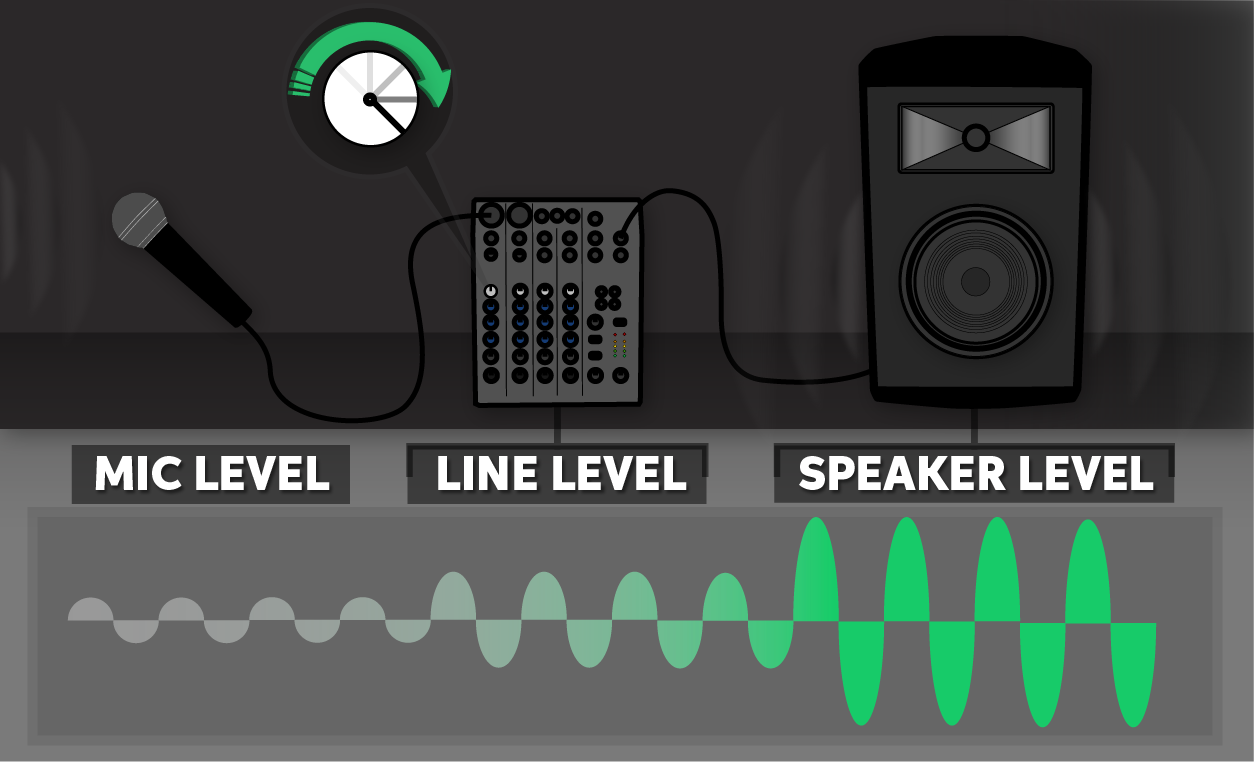
A line-level signal is approximately one volt, or about 1,000 times as strong as a mic-level signal, so the two do not ordinarily use the same input. The mic signal should be first routed to a “pre-amp”.
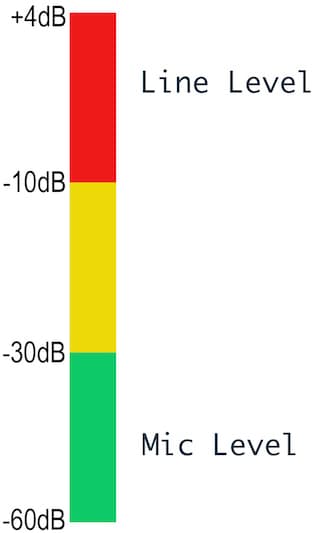
Microphone level is usually specified between -60 and -40 dBu. (dBu and dBV are decibel measurements relative to voltage). Due to the fact that mic signals will tend to be much lower compared to line-level, they will often require a “pre-amp”. This device can boost mic signals to line level without introducing electrical noise. This is just like electric guitars that need amplifiers to boost the signal.
Read more about Mic vs Line Signals

-10 dBV for consumer equipment (like MP3 and DVD players)
+4 dBu for professional equipment (mixing desks and signal processing gear)
Troubleshooting
At any point of a session , something may not work as intended. When uncertain of what is causing a specific issue, walking through the signal flow will reveal all processes in the signal path and aid in addressing any failures.

Reaching the Destination
In majority of cases, the objective is to send audio signals or “the mix” to speakers for listening or to a multitrack recorder. Using the principals of signal flow you can follow the signal path from source to destination keeping in mind any of the additional routing and processing. Awareness of signal flow will ensure you always have healthy signal levels and will be equipped to troubleshoot.

Conclusion
We need to be mindful of the processes in the signal flow path. This involves proper mixing management, technique and experience! With the understanding of signal flow comes the confidence to approach or troubleshoot workflows found in any environment. Awareness of signal flow will ensure you always have healthy signal levels and will be equipped to troubleshoot.

Extra Materials
Watch the following presentation to learn more about basic signal flow.
Then, examine the signal flow of a traditional recording studio.
